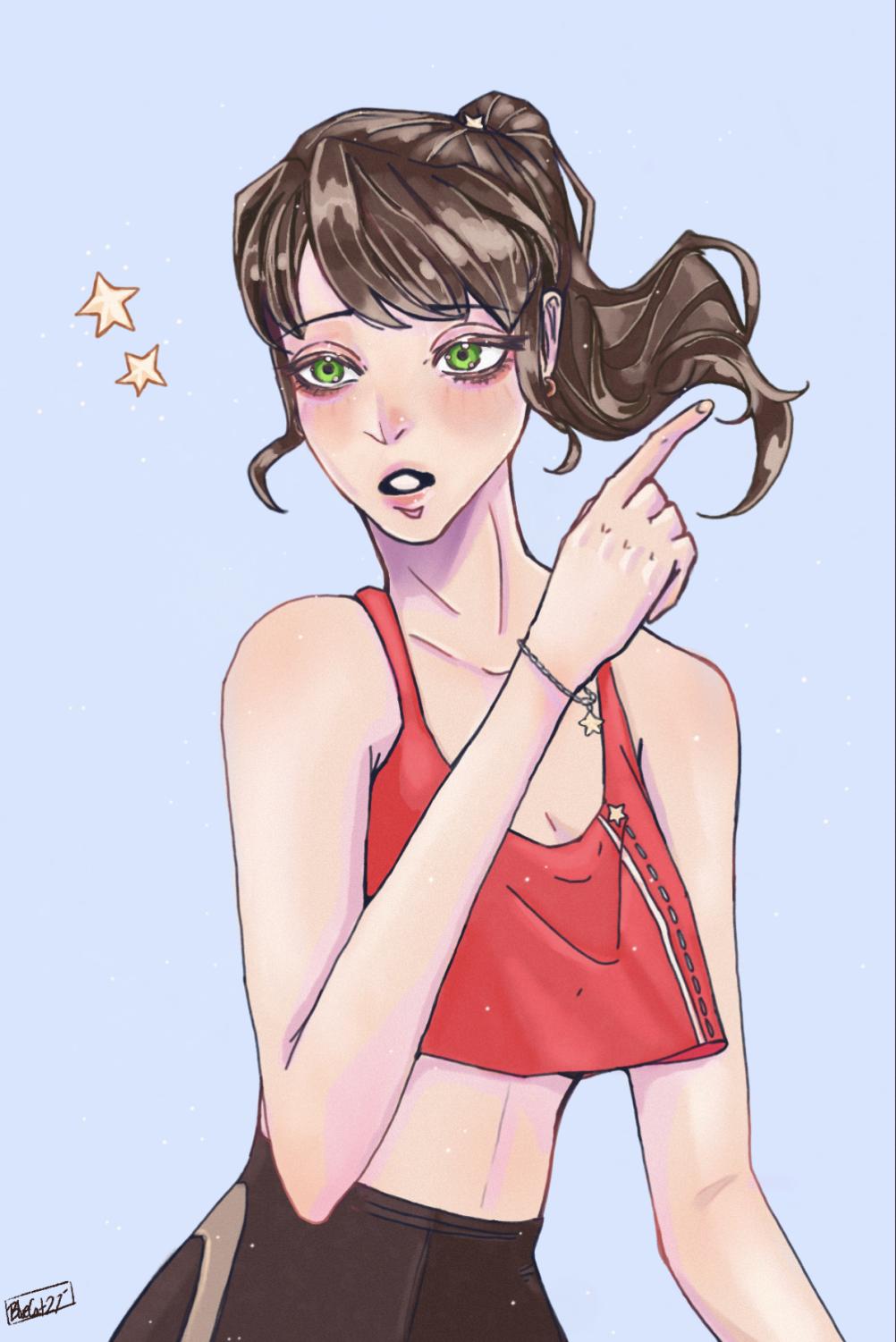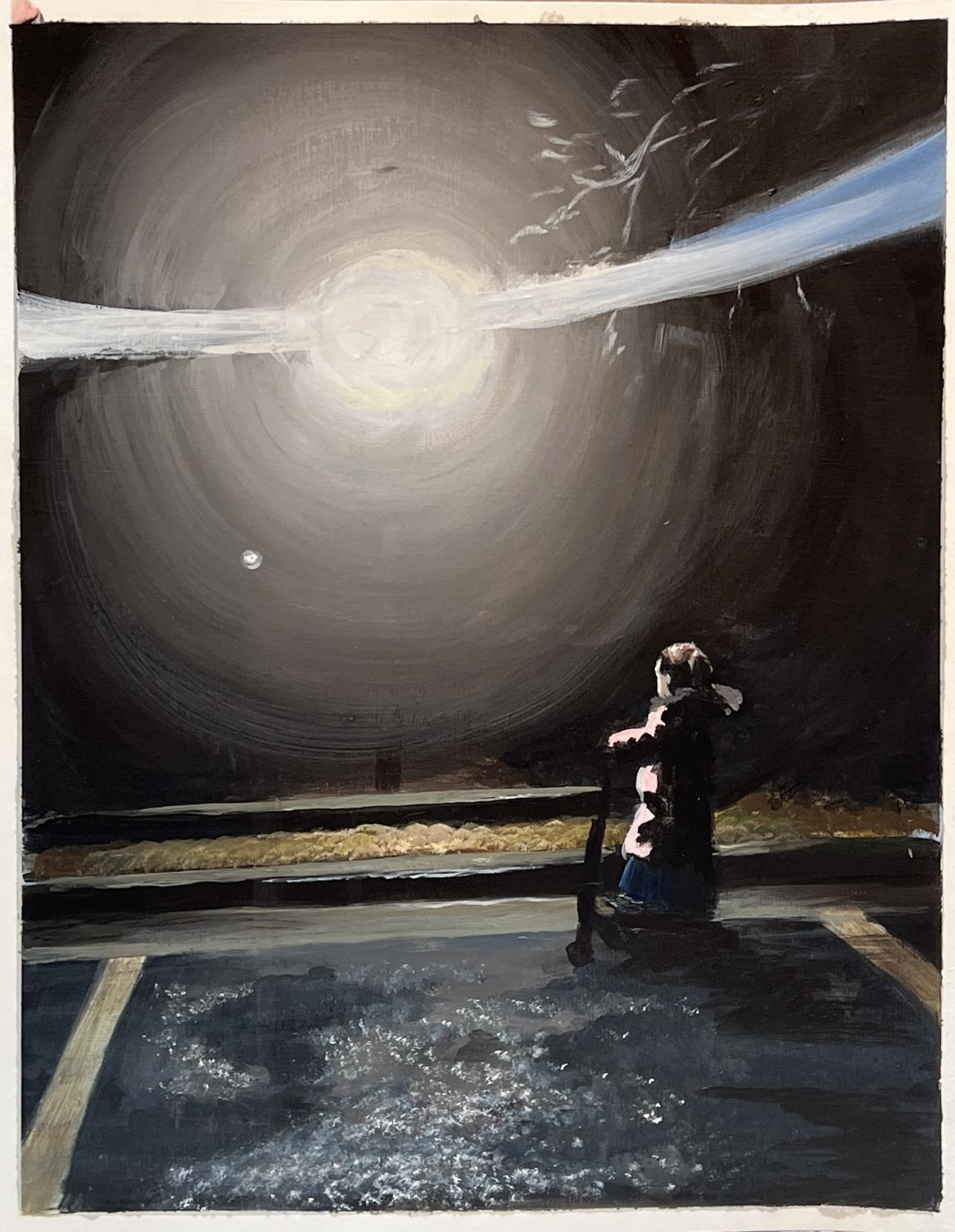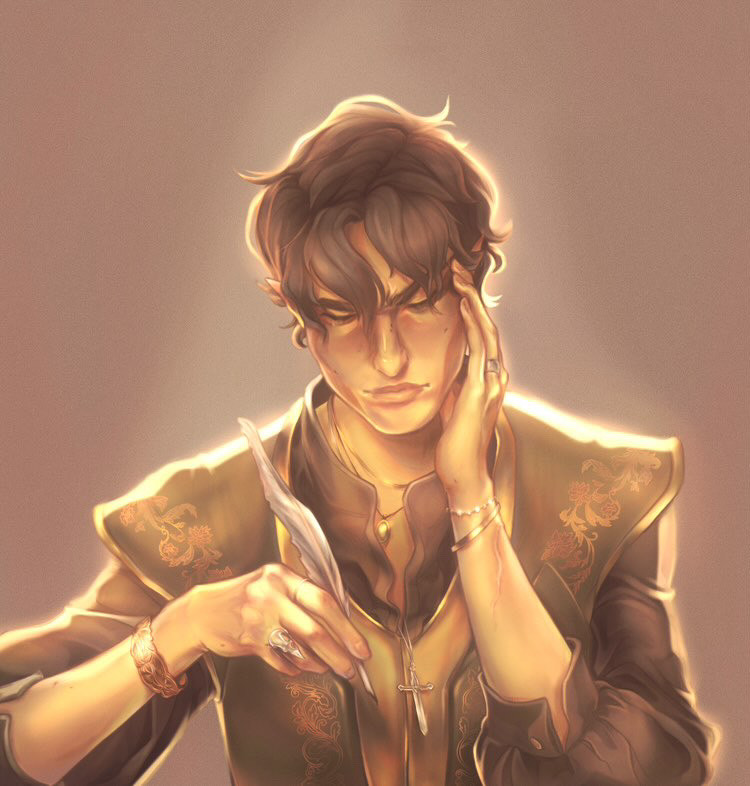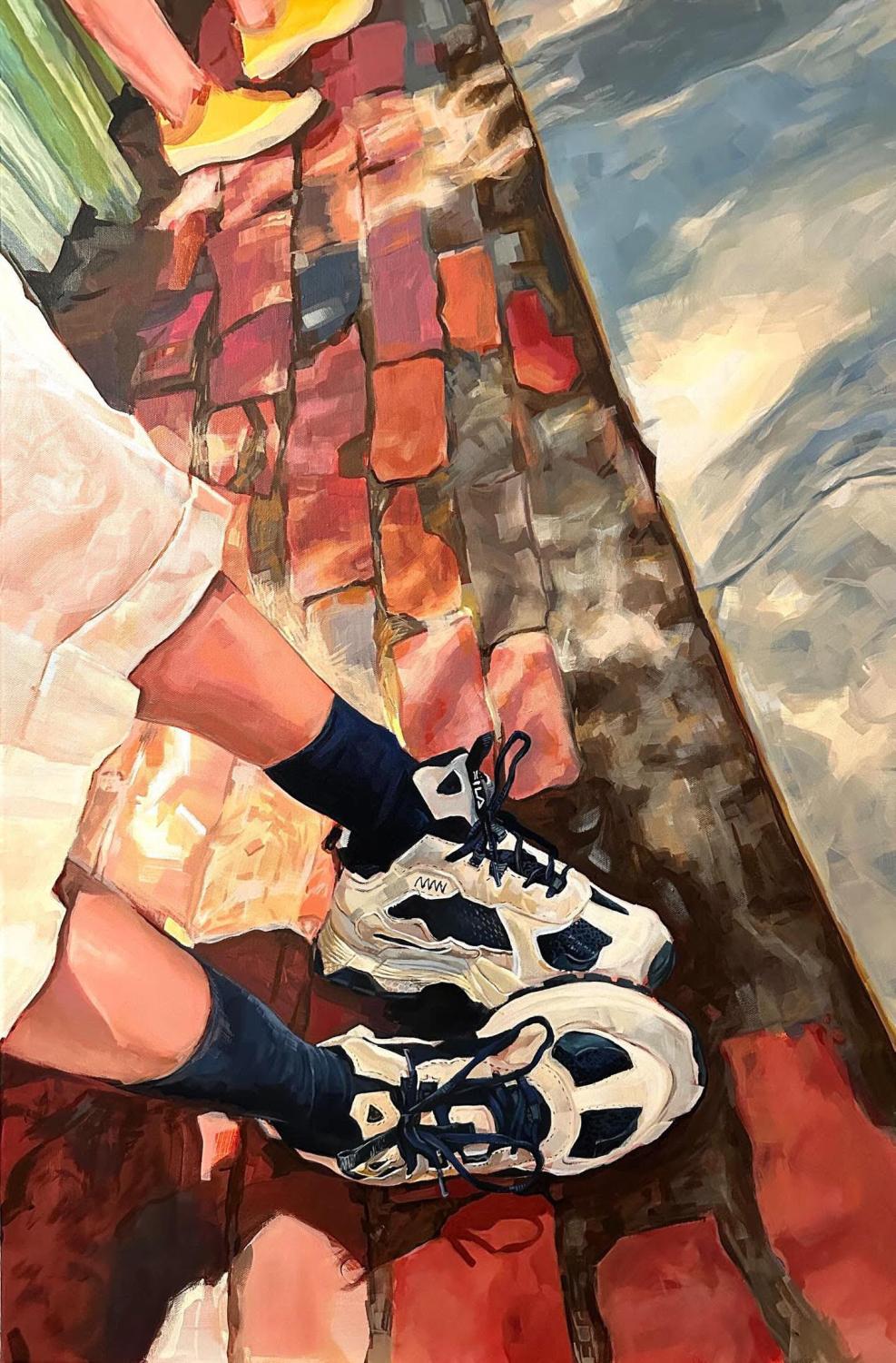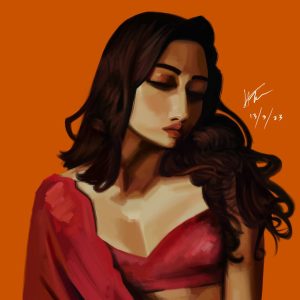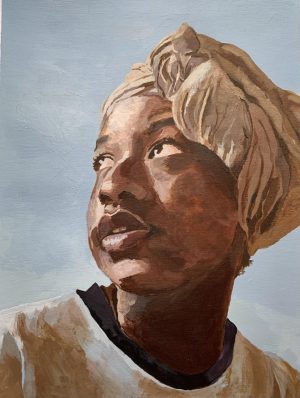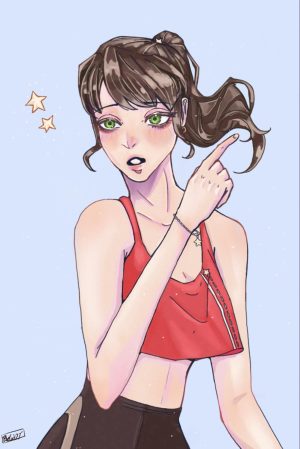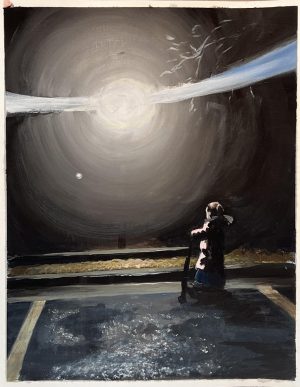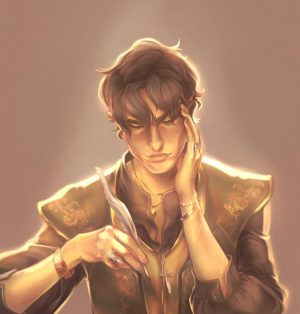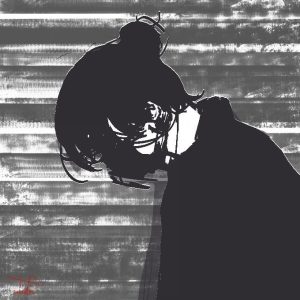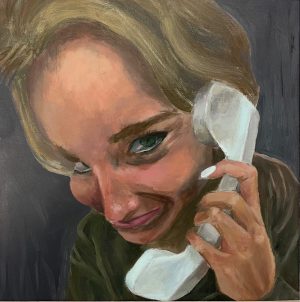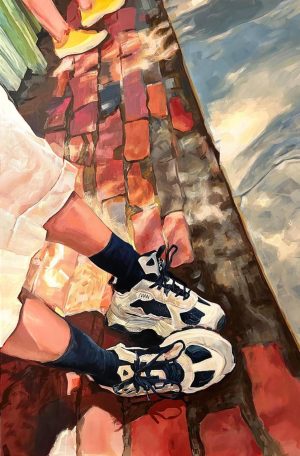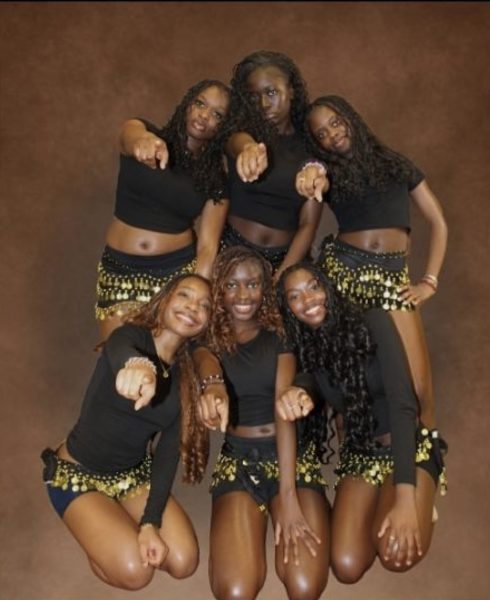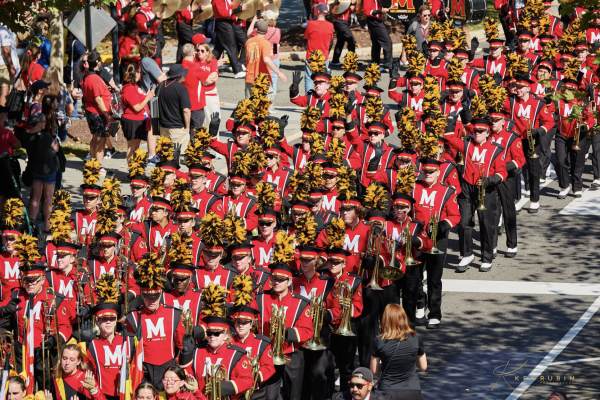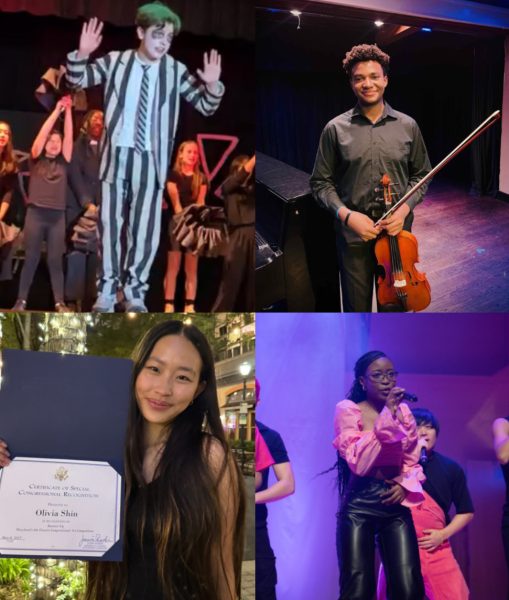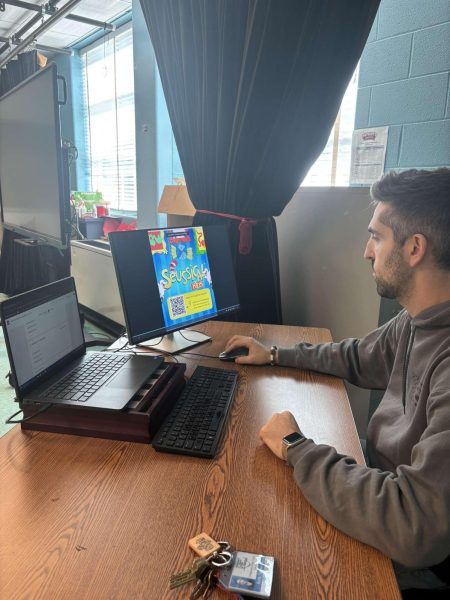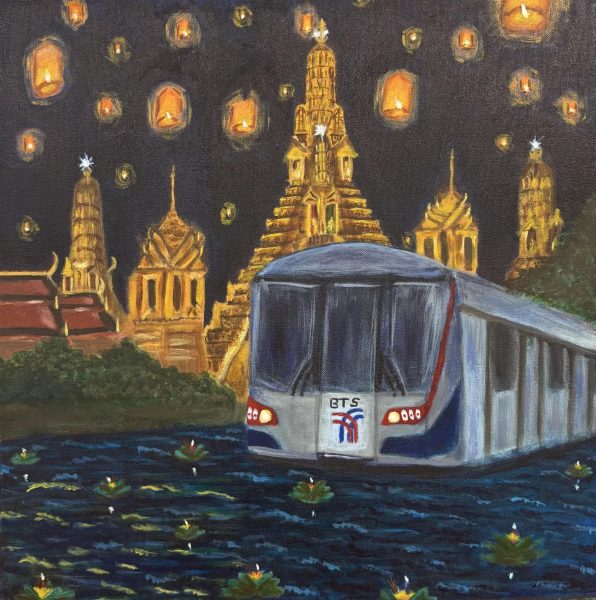Student art spotlights: AP art students build portfolios and showcase their work
Aside from AP Research, the AP art classes, including AP Studio Art Drawing, 2-D Design and 3-D Design, are the only AP courses to rely solely on performance tasks for CollegeBoard scoring, with no end-of-year written or multiple choice exam. Instead, AP art students are required to submit portfolios at the end of the course, demonstrating a concentration or Sustained Investigation in one area of inquiry.
Senior Haarith Jayakumar is in AP Studio Art Drawing and working on a sustained investigation of portraits through mixed media, using unique angles and lighting to create a recognizable personal style. The digital painting in slide one is one of many vibrant portraits Jayakumar has created in building his portfolio. “I made this piece in Procreate and I really wanted to explore the lighting and skin tone specifically for it,” Jayakumar said.
Like Jayakumar, other AP art students have used the sustained investigation process to explore skin tone and lighting. Senior Abiola Adeleye submitted her painted self-portrait, “Monarch Somnium,” pictured in slide two, to the the 23rd Annual Juried Friends of the Yellow Barn competition last year and was featured in the exhibition. The piece won an honorable mention and Adeleye’s work was included in the annual exhibition publication. Adeleye’s other work is also available for purchase at her online store on society6.com. “This piece was a bit of a challenge. It was really the first time I had actually explored skin tones in detail, but I’m so glad I finished it because now it’s one of my favorites,” Adeleye said.
Junior Christina Caggiano has explored a vast range of mediums in building her portfolio throughout this year, from drawing and painting for the Youth Art for Healing program to digital art. Whether it be on paper, on canvas, on her iPad or on the default drawing app pre-installed on her school Chromebook, Caggiano is never without something to create. “I’ve loved art since I was really little, observing and creating it. This piece is one I did in my free time in an anime/cartoon style. When I draw in this style my priorities are to make it bright, cohesive and to give the character a dynamic pose. I use a lot of complementary color combinations to make the art pop,” Caggiano said.
For AP art students like Christina, the class has not acted as an introduction to drawing or painting. Senior Kat Liu, who has been drawing since she started elementary school, has used her SI to portray feelings of comfort through unique lighting and color combination. “I’ve been drawing since kindergarten, but I started doing digital art in middle school,” Liu said. “I used this piece as a practice for lighting.”
Senior Sonya McCardle is concentrating primarily on harsh lighting through mixed media and conveying the different tones that harsh lighting can create. Through AP art this year, they began focusing more on their artwork, having realized that their skill would not improve without practice. “After a long art block, I remembered that the artist is responsible for their own journey. No amount of art classes will be able to drag you through your own artistic development,” McCardle said.
Senior Amanda Tong also started drawing as a way of expression through a creative block. “I started to draw because I was in a writer’s block period and couldn’t express my feelings creatively the way I wanted to, so I turned to drawing in the hope of describing emotions the way I wanted. Of course, art was much more difficult than I thought, but even so, I learned more about myself through drawing and painting and made friends who shared the same interest, so I am grateful for it,” Tong said.
Senior Eva Dukhovskaya, whose self-portrait is pictured in slide seven, says she started making art so she’d have something to do with her hands: “I like art because it gives me something to do with my hands when I’m bored. I started drawing out of boredom, but now I actually enjoy it,” Dukhovskaya said.
Senior Andrea Kim, whose SI focuses on portraying feelings that can’t be portrayed through words, has been developing skills in a vast range of mediums since she started creating art. “If this piece taught me anything, it was that patience is key,” Kim said.
Despite often being labeled as ‘soft’ APs, AP art classes are much more rigorous in reality than one might think. For drawing and 2-D design, the Sustained Investigation, which is only one component of the AP portfolio, requires students to select and upload 15 images, with at least six completed pieces demonstrating focus, revision and technical skill in the area they’ve selected, as well as provide written evidence of their learning. On top of that, students are required to submit five selected works that they feel demonstrate the best of their ability and breadth in their artwork.
AP art classes require an immense amount of focus and dedication to one’s art and bridge the gap that is perceived to be disconnecting academics from the arts. The reality is that art and academic learning have always been irrevocably intertwined, and the skill that these student artists demonstrate every day must be recognized.
Your donation will support the student journalists of Thomas S. Wootton High School. Your contribution will allow us to purchase equipment and cover our annual website hosting costs.
Senior Isaac Muffett is the opinions editor in his fourth year on the Common Sense staff. When he's not writing or researching, he spends his free time...




